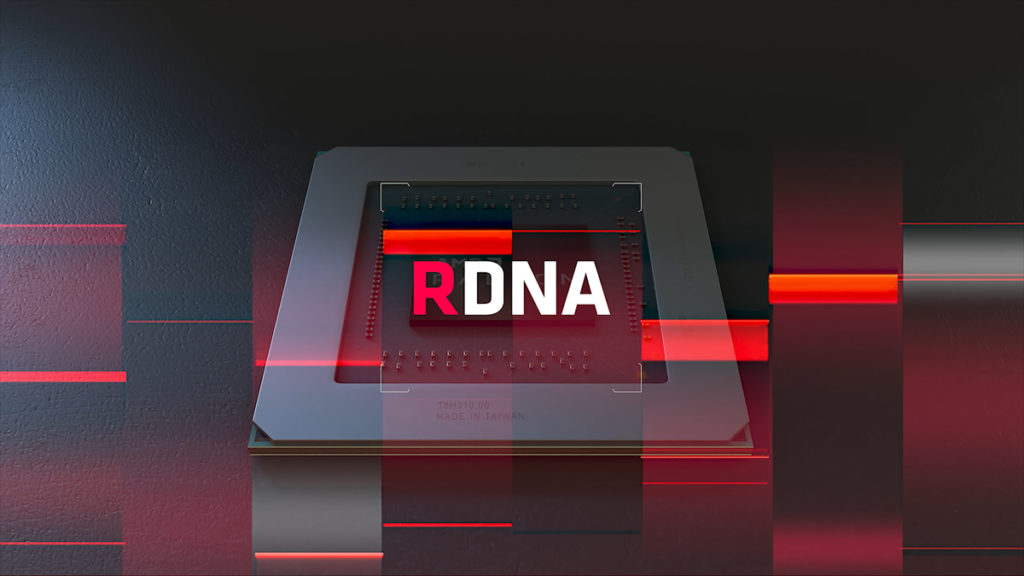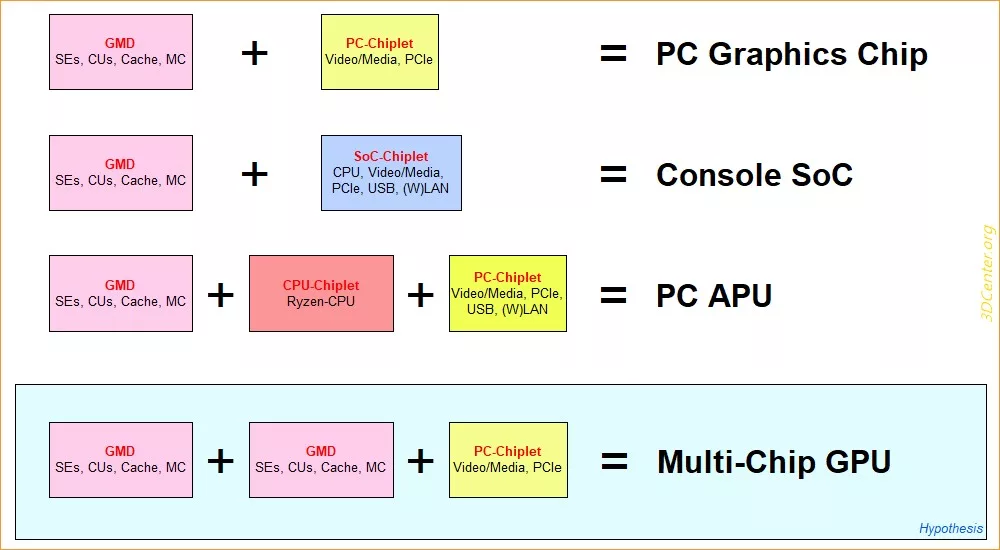
AMD could introduce a product line based on a one-size-fits-all chiplet approach featuring a multi-use Graphics Memory Die (GMD). A few days ago, new rumors surfaced by leaker Kepler_L2 that AMD will be using names from the classic kids show, Transformers, for its upcoming RDNA 5 lineup. However, among those details, 3DCenter picked up on another possibility and has run with an interesting concept whereby AMD might be working on an almost modular approach, allowing one particular chiplet to be used in multiple applications.
Per 3DCenter (machine translated):
“In addition to the code names alone, which of course do not change the technology, further discussion on Twitter/X has also led to other interesting statements from ‘Kepler_L2’. At least AT2 is said to be implemented as a ” GMD chiplet ,” a “Graphics Memory Die” with arithmetic units, cache, and memory interface, but without a video/media engine and without a PCIe interface.”

Kepler responded on social media, clarifying that the GMD lacks certain GPU functions such as display, media, and PCIe, and as far as they know, the above approach is not planned for RDNA 5. However, both parties seem to agree that AMD might have other plans in store for the future.
Indeed. This was included this as a hypothetical possibility. It may be usable in the future, but it's obviously not planned for RDNA5 (otherwise they wouldn't need so many AT chips).
— 3DCenter.org (@3DCenter_org) September 5, 2025
While it sounds like using the same GMD for various AT chip applications across the board isn’t in the cards for AMD’s next GPU series, the idea of it seems plausible as a cost-saving strategy. From PC to console SoCs, APUs, and more, there are benefits to be found. Obviously, this is all pure speculation, but AMD has been prominent in exploring new package designs for multiple usage scenarios, whether it be for GPUs, CPUs, or APUs.
“But even if this option isn’t yet used for the RDNA5/UDNA generation, the technical foundation for future multi-chip solutions would already be created – which could then be activated in subsequent UDNA generations.”
– 3DCenter (machine translated)
